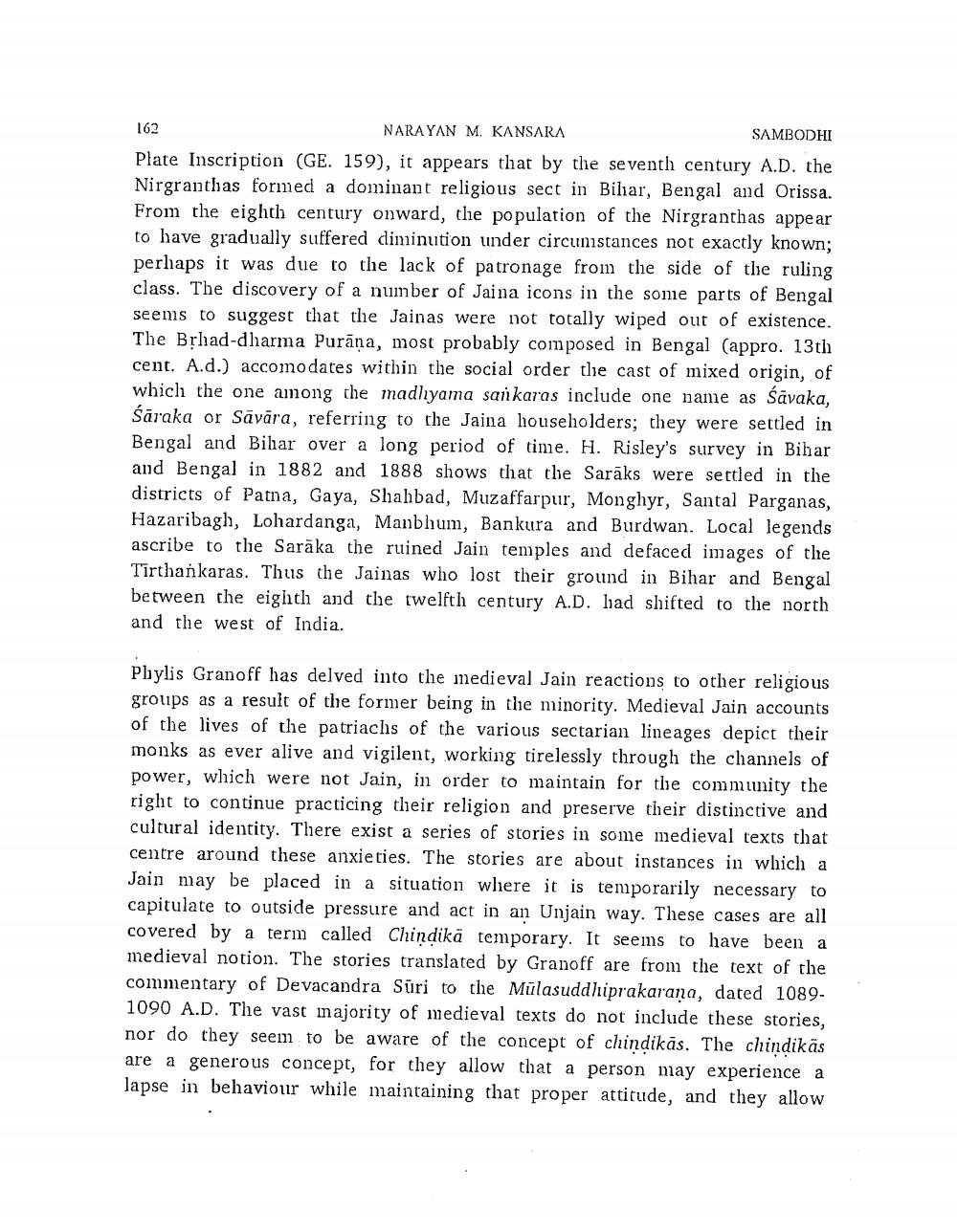________________
162 NARAYAN M. KANSARA
SAMBODHI Plate Inscription (GE. 159), it appears that by the seventh century A.D. the Nirgranthas formed a dominant religious sect in Bihar, Bengal and Orissa. From the eighth century onward, the population of the Nirgranthas appear to have gradually suffered diminution under circumstances not exactly known; perhaps it was due to the lack of patronage from the side of the ruling class. The discovery of a number of Jaina icons in the some parts of Bengal seems to suggest that the Jainas were not totally wiped out of existence. The Bșhad-dharma Purāna, most probably composed in Bengal (appro. 13th cent. A.d.) accomodates within the social order the cast of mixed origin, of which the one among the madhyama sankaras include one name as Savaka, Śāraka or Sāvāra, referring to the Jaina householders; they were settled in Bengal and Bihar over a long period of time. H. Risley's survey in Bihar and Bengal in 1882 and 1888 shows that the Sarāks were settled in the districts of Patna, Gaya, Shahbad, Muzaffarpur, Monghyr, Santal Parganas, Hazaribagh, Lohardanga, Manbhum, Bankura and Burdwan. Local legends ascribe to the Saraka the ruined Jain temples and defaced images of the Tirthankaras. Thus the Jainas who lost their ground in Bihar and Bengal between the eighth and the twelfth century A.D. had shifted to the north and the west of India.
Plıylis Granoff has delved into the medieval Jain reactions to other religious groups as a result of the former being in the minority. Medieval Jain accounts of the lives of the patriachs of the various sectarian lineages depict their monks as ever alive and vigilent, working tirelessly through the channels of power, which were not Jain, in order to maintain for the community the right to continue practicing their religion and preserve their distinctive and cultural identity. There exist a series of stories in some medieval texts that centre around these anxieties. The stories are about instances in which a Jain may be placed in a situation wliere it is temporarily necessary to capitulate to outside pressure and act in an Unjain way. These cases are all covered by a term called Chindikä temporary. It seems to have been a medieval notion. The stories translated by Granoff are from the text of the commentary of Devacandra Sūri to the Mülasuddhiprakarana, dated 10891090 A.D. The vast inajority of medieval texts do not include these stories, nor do they seem to be aware of the concept of chindikās. The chindikäs are a generous concept, for they allow that a person may experience a lapse in behaviour while maintaining that proper attitude, and they allow




